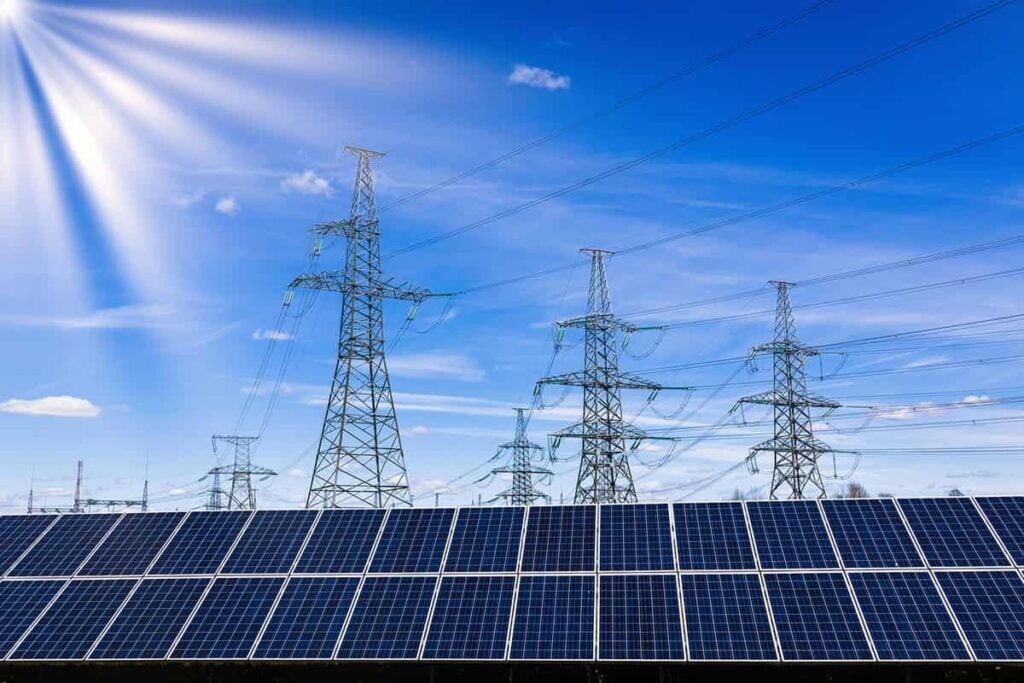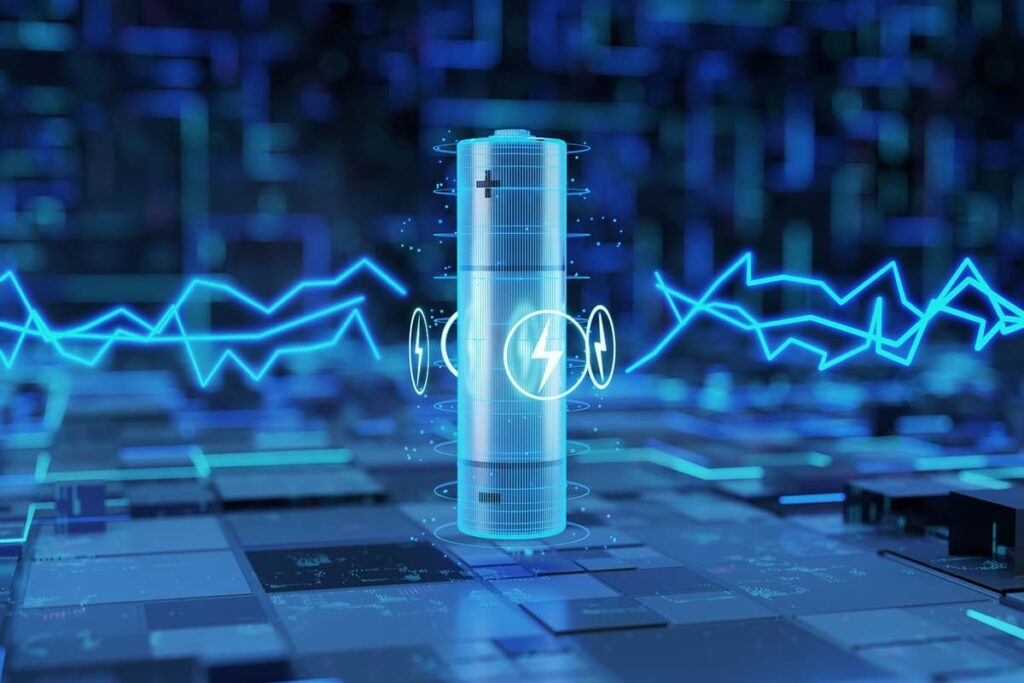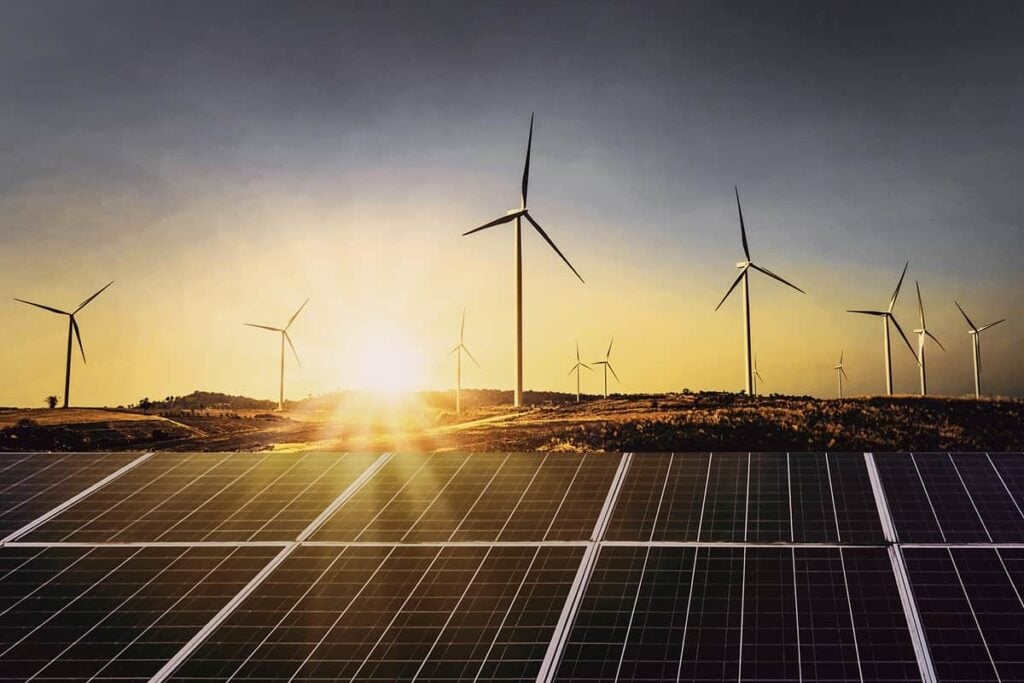How Artificial Intelligence Can Improve Renewable Energy
Table of contents

We learned last month that we have about a dozen years or so left before this big blue ball goes up in flames. While we are stridently apolitical at Nanalyze, we also strongly believe in the power of science and technology to understand and tackle humanity’s biggest challenges (and to create a bit of wealth along the way for the savvy investor). Whether or not you believe the supercharged hurricanes, record-setting hot summers, and disappearing glaciers are a result of climate change or not, you can’t argue against cleaning up the planet, especially if there’s a profit to be had in doing so.
Let’s focus on the positive stuff: Investment in renewable energy is far outpacing less clean energy sources, partly thanks to climate change advocates and partly thanks to the fact that renewable energy is finally becoming economically viable. For example, new solar energy projects alone accounted for 157 gigawatts in 2017, more than double coal, gas and nuclear. It’s something we talked about last year in our article on “The Incredible Growth of the U.S. Solar Industry.” Saving the planet has never looked so profitable. Another sign of the maturity of the industry: The conversation has turned to how artificial intelligence can improve renewable energy.
AI for Energy Efficiency
We’ve already seen some hints about the possible ways AI might improve energy efficiency in general. For instance, last year we profiled a Silicon Valley company called Verdigris that uses artificial intelligence to improve a building’s energy efficiency after crunching data from dozens of sensors. Indeed, the marriage of AI with the Internet of Things (IoT) promises to reduce utility bills in smart homes or to save costs by predicting industrial-scale problems before they occur, such as a wind turbine failure. Other AI solutions can figure out how much energy each appliance in a home is using so you can make better decisions about which smart oven to buy.

In the bigger picture, AI will be the brains behind a proposed national smart grid that will take the input of millions of sensors to make real-time decisions about who lives and who dies where to allocate energy resources. One very famous example of an energy-saving AI algorithm involves Google. The tech giant turned over energy management of its data centers to its AI division DeepMind, which back in 2016 first helped reduce energy consumption for cooling all those computer servers by 40 percent.
Wind and solar offer particularly rich datasets that algorithms can chew on in order to provide insights on current problems, predict issues that might arise, improve energy storage or to identify the optimal layout of the next mega solar farm (so let’s add energy engineer to the list of white-collar jobs AI will steal some day).
AI to Improve Renewable Energy Operations
Let’s start with some low-hanging fruit, such as how algorithms can diagnose problems and optimize solar plant operations. Take the example of a Tel Aviv startup called Raycatch, which has raised $7.3 million for just that purpose, including a $4.5 million Series B earlier this month. Raycatch provides an “AI-based diagnostics and optimization solution” that takes all of the data produced by a solar energy plant and turns it into a daily, real-time action plan without any additional hardware installations. It will even calculate ROI on its suggested improvements, as well as analyze actual performance against projected models.

Founded in 2015, Raycatch counts General Electric, among others, as a customer.
AI to Design Renewable Energy Systems


The company claims that AI-designed solar farms can reduce the cost of producing renewable energy by 10 to 20 percent compared to those systems designed by soon-to-be unemployed engineers.
AI for Renewable Energy Storage


The company says Athena can “future proof” a customer’s solar investment by giving it “greater control and flexibility on their energy decisions through automated, real-time, energy optimization.” Athena ingests reams of data per second, from solar generation and load behavior to electricity rates and even weather forecasts, according to an interview in Alt Energy Magazine. Algorithms then go to work to squeeze value out of energy storage, even going so far as to create virtual networks of power plants that can send or store power based on the most favorable economics. While the company concedes that adding storage to solar can increase the cost of the system up to 20 percent, those costs should be more than offset by up to 30 percent in savings from its intelligent storage solution.
AI Weather Forecasts for Renewable Energy
Renewable energies like solar and wind are obviously reliant on the weather. And companies like Stem are reliant on accurate forecasts as part of their AI-driven solar storage calculations. But instead of just getting a weather forecast, wouldn’t it be even better to get an energy forecast? That’s the concept behind Nnergix, a Spanish startup based in Barcelona (with an office in Oakland, California) that has raised about $1.7 million in disclosed funding. We recently highlighted the advances in weather forecasting technology. What Nnergix does is use weather data tech and machine learning to make energy forecasts. It recently launched a product called Sentinel Weather, which provides free access to historical data and weather forecasts in any location on the planet. Energy engineers will be particularly interested in the platform’s solar and wind power forecasts for individual plants at 15-minute resolution for up to 18 hours. Hourly power forecasts are possible for one week.
The six-year-old startup reportedly has clients in about 20 countries.
AI for Renewable Energy R&D
The long-term viability of the renewable energy sector requires economic scalability, meaning being able to build enormous energy systems that are more efficient and cheaper than non-renewables, regardless of how attractive contracting black lung may be. As we’ve already discussed, AI is doing its part by designing renewable energy systems, analyzing their performance, and predicting future production and storage needs. Some companies are leveraging machine learning from the very beginning in the research and development phase, a trend we’ve seen in other areas of research and AI.

Take the example of SunPower (SPWR), a publicly traded company that we’ve come across before when we talked about investing in solar ETFs. The Silicon Valley-based company recently built a new solar research facility. One of the key tools at the new $25 million facility involves quality control over the photovoltaic cell manufacturing process. AI is used to analyze the process to not only ensure a quality product, but to provide new insights to improve the technology over time. Incidentally, SunPower is embracing all kinds of emerging technology, including the use of drones to survey potential solar power farm sites in order to create more efficient designs. No doubt engineers will employ machine learning there as well, maybe through HST Solar or just buy the startup outright.

Conclusion
The combination of artificial intelligence and renewable energy seems to be the perfect marriage of an emerging technology with a maturing industry. Until we start mining asteroids or producing cheap, limitless nuclear fusion energy, we’ll need to find ways to conserve resources and make renewable energy systems cheaper and more efficient to manufacture, install and operate. The development of AI-powered solutions for every facet of the renewables energy supply chain won’t just make it cheaper to power things like smart security systems. Cheap, limitless renewable energy means we can afford to desalinate water on a mass scale or build the rockets that will someday take us to Mars. It will at least be a brighter, if not hotter, future for all.
Sign up to our newsletter to get more of our great research delivered straight to your inbox!
Nanalyze Weekly includes useful insights written by our team of underpaid MBAs, research on new disruptive technology stocks flying under the radar, and summaries of our recent research. Always 100% free.















Who wrote this article? Its witty and outright enjoyable while providing facts at the same time. Just enjoyed this piece. Fair to say, I became a fan of this site with just this article.
Thank you very much for your kind words. We don’t use bylines so that readers focus on the message, not the messenger. We’re always happy to hear we have another fan! Thank you for your support.